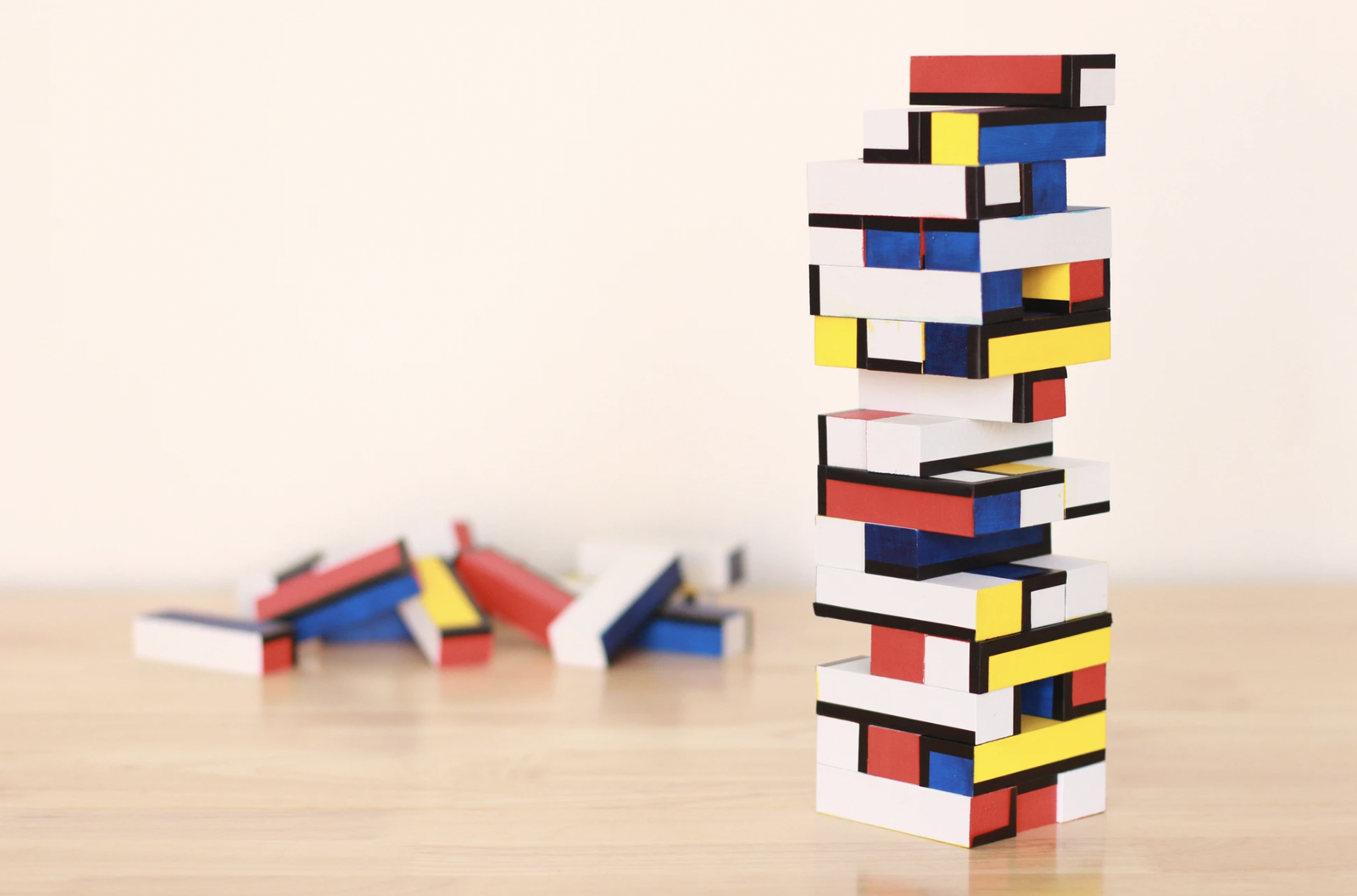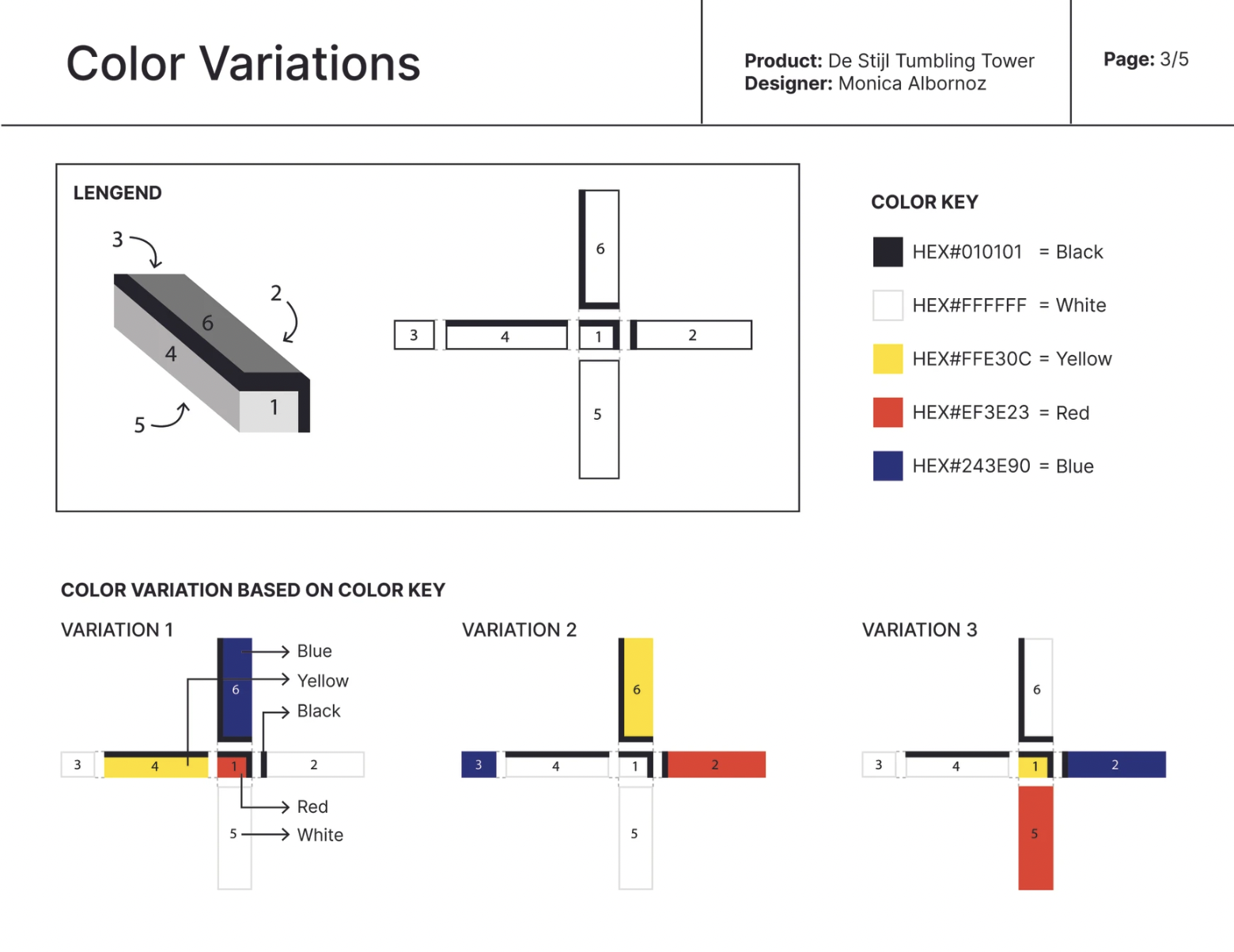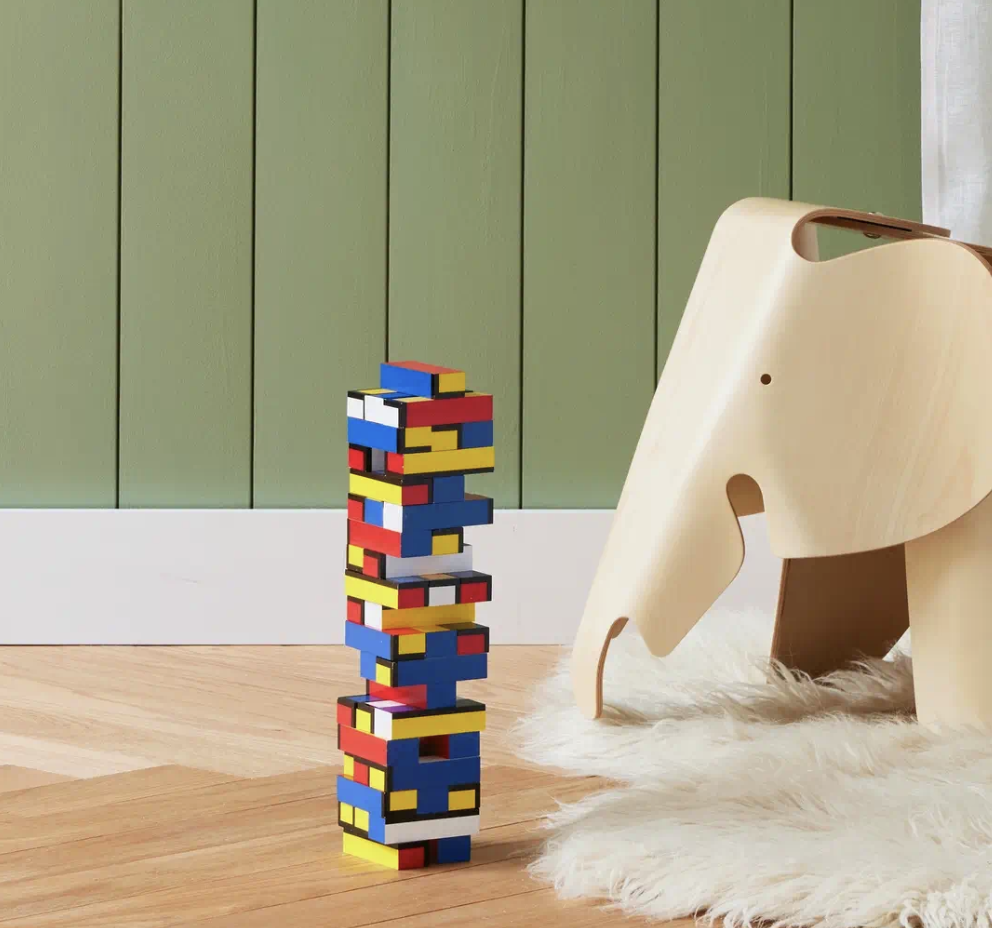New MoMA Product: An Interview with Designer-Alum Monica Albornoz
Monica Albornoz graduated from MFA Products of Design in May 2023, where she worked to develop her De Stijl Tumbling Tower, now available on the MoMA Design Store website.
We sat down with Albornoz to learn more about her path to the program, her evolving identity as a designer, and the ideation and development process behind her new MoMA product.
Note that this interview has been edited for clarity.
An earlier prototype of the tumbling tower.
First off, congratulations on your MoMA product! To kick things off, we’d love to know: What were a few key highlights from your time at PoD?
I always loved having guest speakers over. There were a few jaw-dropping talks that energized and inspired me when I really needed it, given the difficulty of the program. Megan Ford’s class in our second year was also a highlight. But if I had to pick one thing, I think that my cohort, a group of talented international designers, was the best highlight.
How did the program help define your identity as a designer?
I’ve always been a generalist. I had a hard time choosing what career to pursue from a young age, because I loved learning across subjects. In the end, I pursued contemporary art because it allowed me to think critically and make with my hands at the same time. But I found my undergraduate education to be lacking on practical, real-world matters. I quickly realized that a great piece of art was nothing without knowing how to sell, and it struck me that in order to be the maker I wanted to be, I had to expand the scope of my expertise.
The program helped me develop a breadth of skills that I was craving, and overall helped me fortify the value of a generalist. That doesn’t mean that specialists are unimportant, but I believe that expertise can be better achieved in the long haul of a professional practice than in an agency-style academic space.
I’ve come out of the program finding pride in my ability to think beyond the “pixel-perfect,” in designing for consequence, and in living by my values.
“I’ve come out of the program finding pride in my ability to think beyond the “pixel-perfect,” in designing for consequence, and in living by my values.”
From the desk of the designer!
Where did the idea for the tower first come from? Was it inspired by anything in particular?
It’s actually a bit funny. In our very first MoMA prep meeting, our professor Sinclair Smith specifically said not to design anything in a Mondrian style. He’s right—it’s hard to escape Mondrian products. There are a million wares slapped with Mondrian graphics. But all of these have something in common: they’re static. Though I wasn’t thinking about this consciously.
Over spring break, I started sketching a Jenga tower, and filled the blocks with primary colors and outlined the edges black. As I sketched, I liked the simplicity (which MoMA needed for production processes), and the cultural clarity (most people have played or seen a Jenga game). Also, the visual design had meaning: It was like making a Mondrian painting come to life.
We think about Mondrian works as static and flat. As 2D paintings, of course they are. But Mondrian was exploring visual balance through asymmetry, and ultimately guiding our gaze in a dynamic journey across his compositions. These ideals translate pretty well into a tumbling tower game!
Sinclair was right, but at the same time, I believe that all ideas deserve a place in the sketchbook. You have to be able to follow your gut.
You mentioned the biggest highlight of your time at PoD being your talented cohort of peers. Were any of them involved in any of your ideation and iteration process?
They were! Especially at the early stages when we had dozens of concepts and needed to make them come to life quickly and cheaply. My good friend and peer Nihaarika Arora, who has years of experience with physical product design, helped me with basic 3D modeling and taught me a few physical production techniques.
Overall, the PoD crew was supportive of everyone’s MoMA prototypes, sharing first impressions, helping with the hard skills, and cheerleading when the going got tough.



Is this your first product to be sold? What does it feel like to have something you designed in the MoMA store and MoMA catalog?
I’ve sold many products as an independent ceramicist, but this is my first time licensing a design for a company to produce! Knowing that MoMA is manufacturing one of my designs under their brand still blows my mind.
I took the leap of moving to New York City almost 10 years ago, because I wanted to be close to the art institutions that had inspired me during my first trip to the city, when I was 13. I still remember running all over the MoMA Store trying to decide what souvenir to get myself.
I came to New York to be an artist, but arrived at MoMA through the door of product design!
Transitioning from art to design was not part of my grand plan, but looking back, somehow inevitable.
Has your success with the Tumbling Tower influenced your goals or vision as a designer?
This has given me the confidence to leverage my art education regardless of what I am designing. Art serves as much more than visual inspiration in my design work. The ideas, philosophies and theories behind art movements can help anchor and contextualize design challenges of many kinds. I’m excited to embrace that.
Do you have any other new products or projects up your sleeve?
Yes! I recently proposed and prototyped a second product to MoMA, which their team is currently reviewing. I think this new product is very appropriate for MoMA, so I’m eager to see where it goes. But, if they choose not to move forward, I’m not about to give up on seeing this product come to life! There are always other companies who might be interested…!





